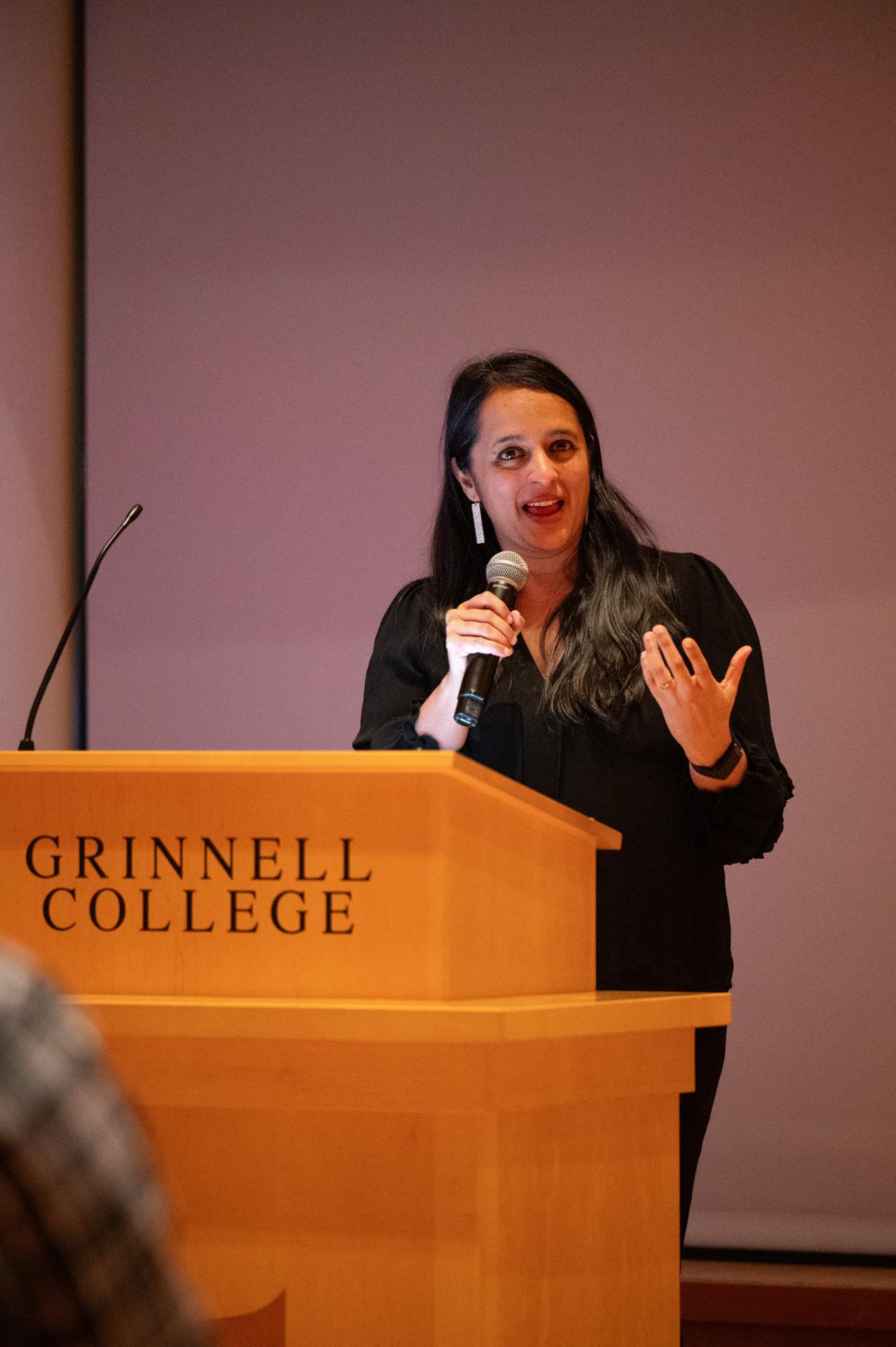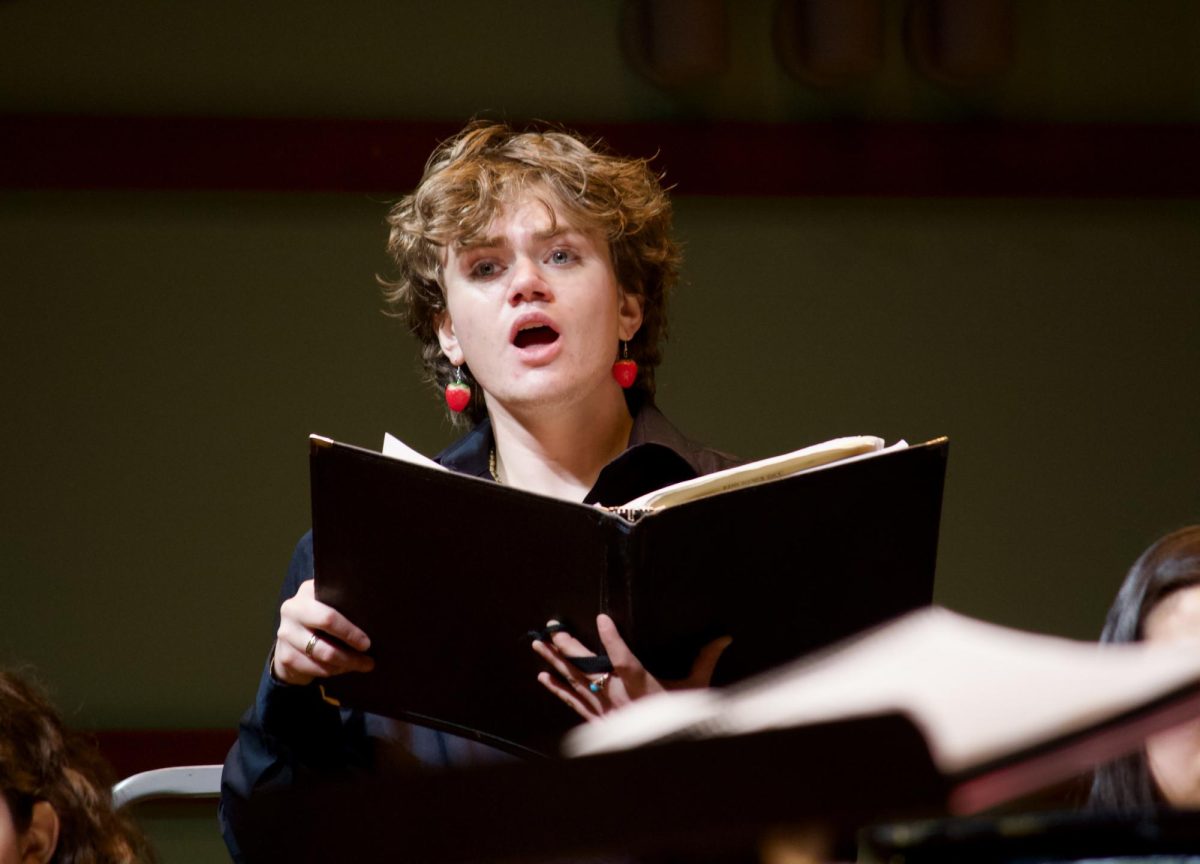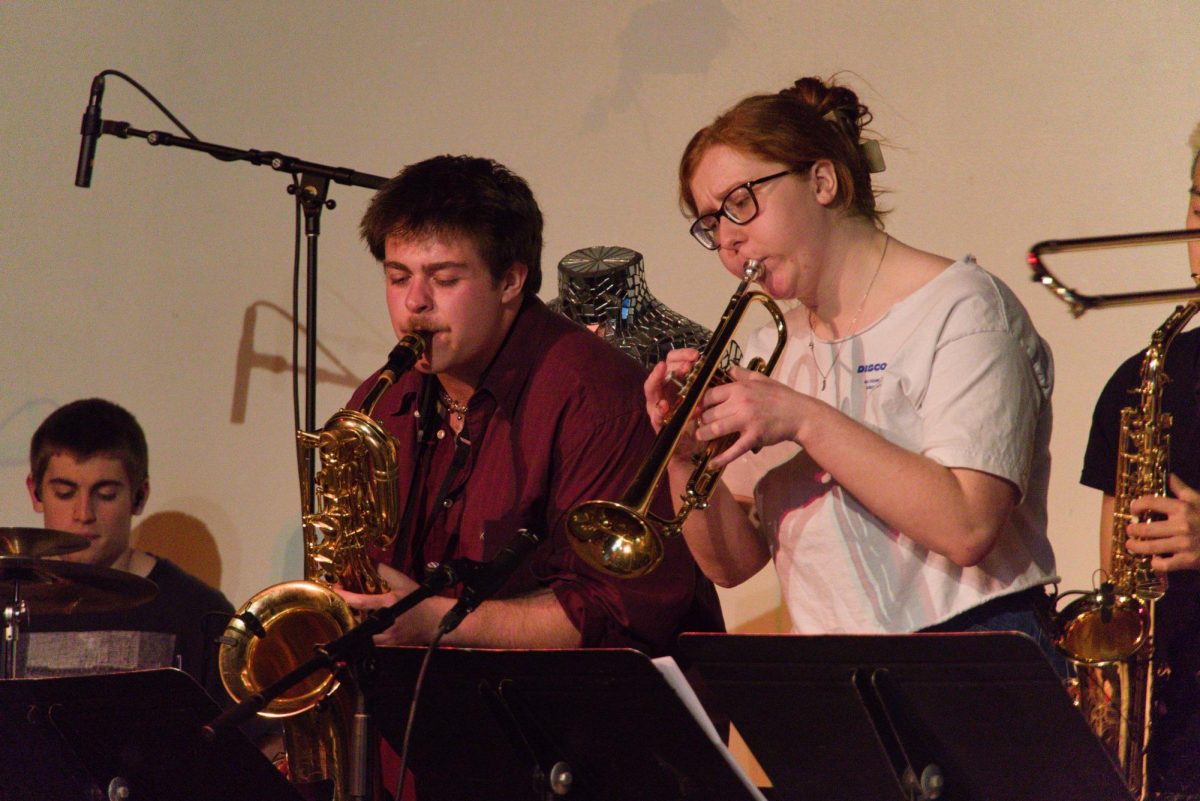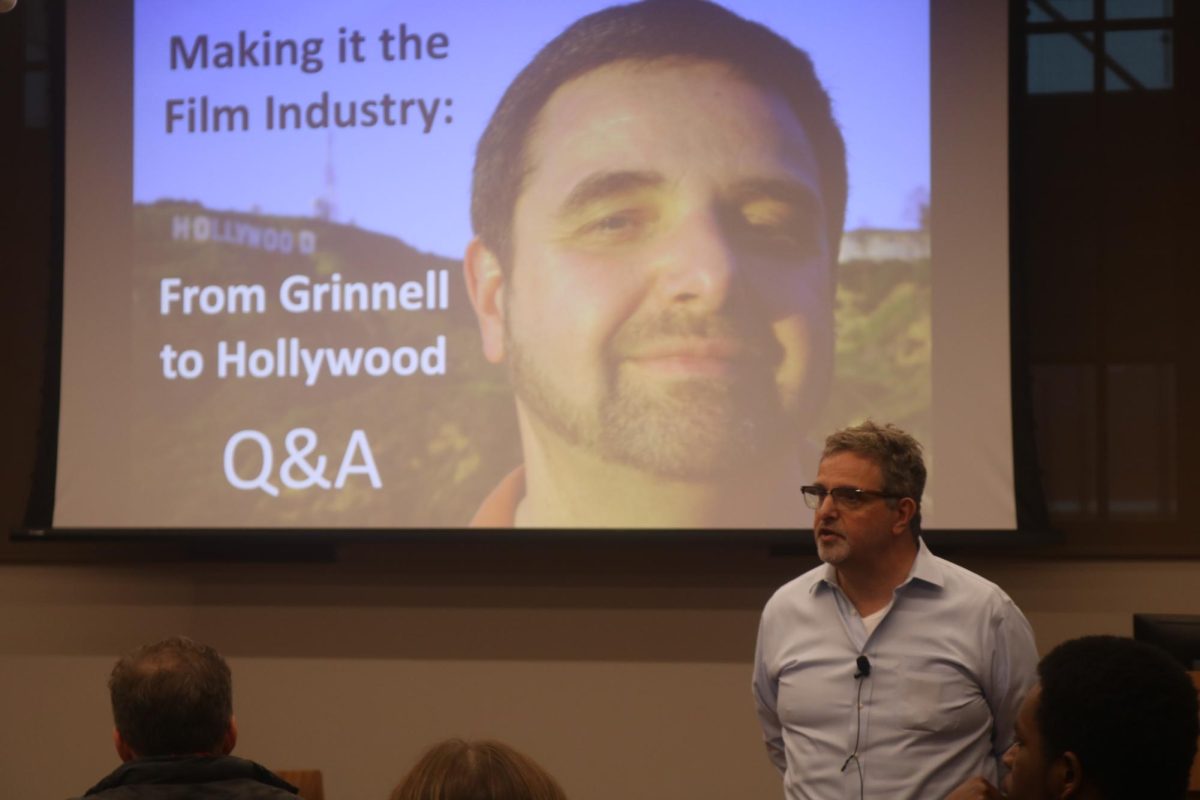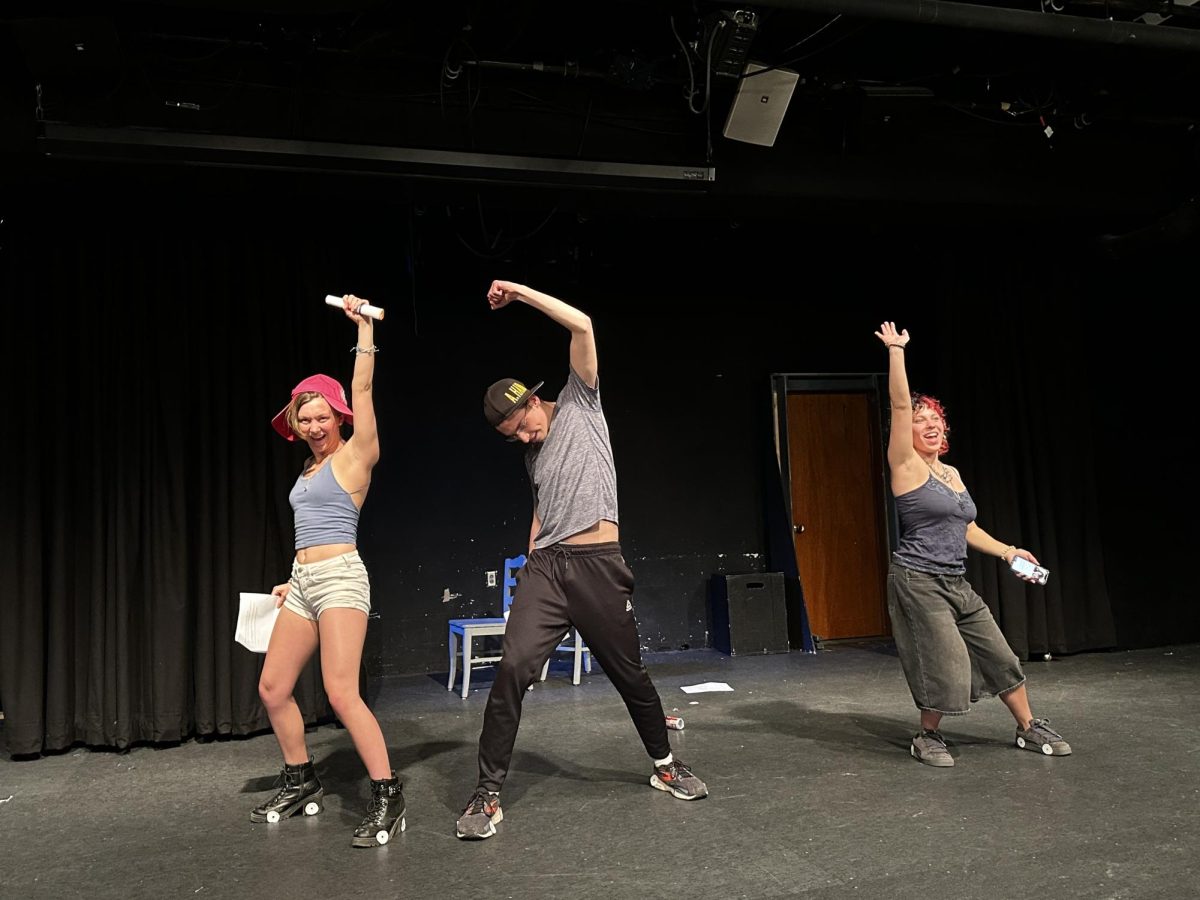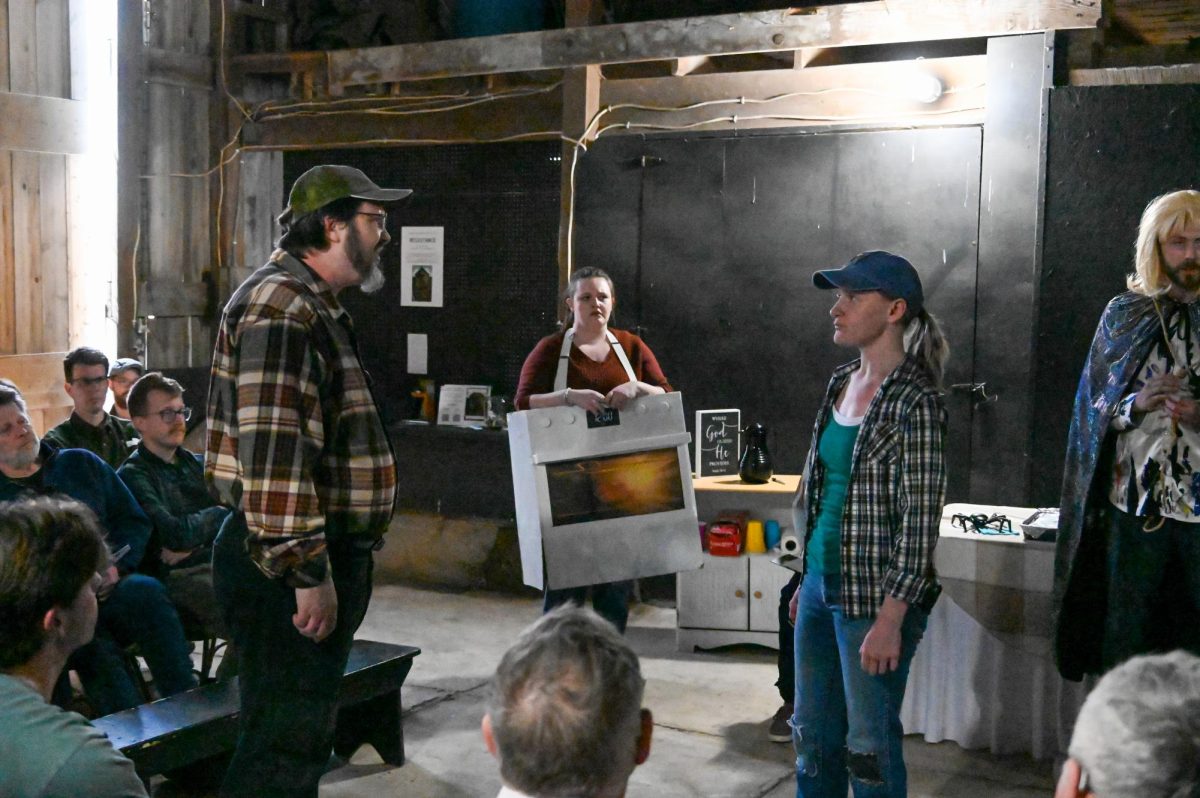On Nov. 19, Room 101 in the Joe Rosenfield `25 Center (JRC) echoed with music, laughter and dynamic conversation. Reena Esmail, composer, discussed her approach to bridging cultural divides between Western classical and Hindustani music, connecting with the Grinnell music community through the lecture.
Through the lens of her piece “This Love Between Us,” which includes seven movements that incorporate sacred texts in modern and ancient Indian languages from seven major religious traditions, Esmail explored the contexts and techniques of bringing two different musical traditions into dialogue with each other. While visiting Grinnell, she worked through the piece with Grinnell students and faculty. The Grinnell Singers and the Grinnell Oratorio Society will perform this piece in Sebring-Lewis Hall on Dec. 8, along with an orchestra that includes professional sitar and tabla players.
Esmail is a graduate of both the Juilliard School and the Yale School of Music, and received a Fulbright-Nehru grant to study Hindustani music in India. She currently serves as the artist in residence at the Los Angeles Master Chorale. Professor of music and conductor John Rommereim introduced Esmail, noting that the decision to hold the lecture in the center of campus rather than in the Bucksbaum Center for the Arts was informed by her “wider impact that reverberates beyond the concert halls and beyond what is sometimes the elitist, cloistered sphere of classical music.”
Esmail began by describing how her upbringing in Los Angeles with an Indian family — a Catholic mother, a Muslim father, and the experience of speaking both English and Gujarati — shaped her ability to connect different cultures, religions and languages. Said Esmail, “I always knew there were multiple ways of seeing things.” Her music became a creative space in which she could combine everything she loved from her cultures. “My house is the little house on the border between America and India,” said Esmail.
“This Love Between Us” started as an opportunity from the Yale Institute of Sacred Music, which she wrote in 2016. It both provided an avenue for Esmail to return to India with a tour, served as a culmination of her training and demanded a sacred piece in a time of religious strife. “One thing I wanted to show was that whatever religion you believe in … that religion has tenets written down somewhere, it is usually going to say something about being good to one another and being kind.”
Esmail detailed the process of composing pieces with both Hindustani influences, which privilege improvisation, and Western classical influences, which privilege notation. Playing the sixth movement of “This Love Between Us,” titled “Jainism,” she demonstrated the unique technical aspects of the work, including the throughlines of both the verticality of Western music and the more ornamental melodies of Hindustani music.
To account for the collaboration of Western conductors, who rely on measured notation, and the improvisational skill of Hindustani musicians, she said she wrote different styles of cues. “You can use the same set of sounds, and if you’re processing it through Western music it means one thing and if you’re processing it through Hindustani music it means another thing, but you can use that cognate as an inflection point,” Esmail said.
When working through the rehearsal of works like “This Love Between Us,” Esmail said, “I feel like a musical translator between the presidents of these two countries.” She also emphasized that continuing to chip away at barriers is important to the process. “We are doing the work of diplomacy,” she said. As a composer focusing on challenging players, she said, “My goal is not to push people to their farthest limit, but to push them towards one another.” Often, these kinds of rehearsals yield to bridging divides outside of the music. She said, “We can have those more difficult conversations after we’ve created beauty together.”
Esmail ended the lecture by taking questions from Grinnell students, connecting with the ideas of spirituality, mortality and community through her music. She concluded by affirming that she hopes to pave the way for a broader path for future composers and musicians.
“I hope the next generation is actually able to collaborate way younger.”

